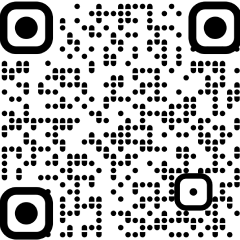The IoT has become increasingly visible and is growing at a phenomenal speed these days. The sensor technologies that make things \u201csmart\u201d are only part of the IoT. However connecting all these devices is what turns isolated pockets of technology into a network that generates and pools data in ways that lead to valuable insights. In this era of internet revolution, communication services treated their network providers as little more than \u201cdumb network,\u201d just providing bandwidth. The IoT revolution with its dramatic increase in strong, secure communication links offers the providers an opportunity to not only play a larger role but to create new value.<\/p>
Internet of Things comes with a concept that everything around should be electronically integrated and interconnected which is all about gathering and sharing of data. Things like smart-phones, smart-watches, smart cars and smart homes are all on the rise, making the world around us unambiguous \u201csmart\u201d. The rise of smart and connected things from wearable activity trackers to connected cars to the electrical grid allows companies to compete not only on the functionality and performance aspect of their products and services but also on the information created by the use of these products or services.<\/p>
Telecommunications is arguably the hub of the Internet of Things. Technology around us is communicating and helping us gather and share information and these technologies are evolving and making other technologies out-dated. Now days our lifestyle is around Internet of Things and many other objects that we interact with on a daily basis. <\/p>
To develop connected and smart IoT based system for our country\u2019s economy, society, environment and global needs. \u201c The Indian Government's plan of developing 100 smart cities in the country. It has earmarked Rs. 7,060 crores in the current budget where IoT would play a key role in developing such cities. This could lead to a quick expansion of IoT in the country. Also, the launch of the Digital India Program by the Government, aims at \u2018transforming India into a digital empowered society and knowledge economy which will provide the required impetus for development of the IoT industry in the country. The various initiatives proposed to be taken under the Smart City concept and the Digital India Program to setup Digital Infrastructure in the country would provide a boost the IoT ecosystem. IoT offers avenues for telecom operators & system integrators to significantly boost their revenues, which has resulted in fast adoption of IoT applications and services. Apart from direct IoT applications, the IT industry also has an opportunity to provide services, analytics and applications related to IoT.<\/p>
The IoT will continue to have a massive influence on consumer and enterprise business models and on human behavior patterns, supporting a move from owning to renting assets on the consumer side, and for businesses to move from selling products to offering services. The M2M market is estimated to generate $7.1 billion in 2015. As per GSMA (GSM Association), the business impact of connected life is expected to be $4.5 trillion by 2020 for the global economy. The widening scope of M2M is seen in sectors like healthcare, education, auto, agriculture, security, surveillance, etc. The Smart Cities project is further expected to boost the IoT and the Internet and communication technologies market in India. Telecom is a core backbone for all these technologies to be successful.<\/p>
In conclusion, the mid-nineties gave the industry \u201cThe Internet\u201d which gave the next big jump to the industry. Now Internet of Things is the next major trend that will impact the industry with connected devices playing a major role. It will add billions of new connected data sources globally by 2020. India is at the apex of a digital revolution where it requires a regulatory impetus to realize this vision. Although India aspires to become a digital economy ensuring connectivity across the length and breadth of the country, the blues of the telecom industry are hindering its true potential. In this time frame, creation of an investor friendly environment is one of the principal requirements for innovation and progress in the telecom sector.<\/p>
<\/p>
<\/p>","blog_img":null,"featured":0,"status":"Y","seo_title":"How Internet of Things (IoT) revolution is changing the telecom landscape","seo_url":"how-internet-of-things-iot-revolution-is-changing-the-telecom-landscape","cms_link":"how-internet-of-things-iot-revolution-is-changing-the-telecom-landscape\/2017","updated_at":"2016-12-23 14:46:06","time":"2016-12-23 14:46:06","authors":[{"author_name":"Ashish Gulati","author_description":"Country Manager, India, Telit India","author_designation":"Country Manager, India","author_company":"Telit India","profile_pic":"retail_files\/author_1446032726_temp._Ashish_Gulati.jpg"}],"tags":[],"url_seo":"how-internet-of-things-iot-revolution-is-changing-the-telecom-landscape"}">
物联网(物联网)革命是如何改变电信景观
电信是最常见的与发明,如电话、传真机、电子邮件、和广播;基本上我们每天交流的方式。全球电信产业是世界上发展最快的国家之一,有见过的,毫无疑问,技术已经在其不断变化的前沿空中管制官发挥了巨大作用。互相发明,或一个新的想法,另一波全球人口可以交流想法,图片,或者谈话,它没有显示出放缓的迹象,。然后出现互联网和各种方式改变了电信格局,尤其是在当前物联网(物联网)革命。
物联网已经变得越来越明显,以惊人的速度增长。传感器技术,使事情“智能”仅仅是物联网的一部分。然而连接所有这些设备是把技术变成一个网络的生成和池数据的方式,导致有价值的见解。在这个互联网革命的时代,通信服务对待他们的网络供应商多一点“愚蠢的网络,”只是提供带宽。物联网革命的显著增加强,安全通信链接提供者提供了机会,不仅发挥更大的作用,创造新的价值。
物联网有概念,周围的一切应该电子集成和相互联系的,都是关于收集和共享的数据。smart-watches之类的智能手机,智能汽车和智能家居都在上升,使我们周围的世界明确的“智能”。智能的兴起和连接东西可穿戴活动追踪器连接汽车电网允许公司竞争不仅在功能和性能方面的信息由产品和服务也使用这些产品或服务。
电信可以说是物联网的中心。我们周围的技术交流和帮助我们收集和共享信息和这些技术和其他技术过时的进化。如今我们的生活方式是围绕物联网和许多其他对象,我们每天相互作用。
开发基于连接和智能物联网的系统对我们国家的经济,社会,环境和全球的需求。“印度政府计划100年发展智能城市。专项Rs。7060卢比在当前预算在物联网发展中这些城市将发挥关键作用。这可能会导致一个快速扩张的物联网。同时,推出数字印度政府计划,旨在把印度变成一个数字授权社会和知识经济将为物联网产业的发展提供所需的动力。下的各种举措提出了智能城市的概念和数字印度项目设置的数字基础设施将提供一个促进物联网生态系统。物联网为电信运营商提供了途径和系统集成商可以显著提高收入,这导致了快速采用物联网的应用程序和服务。除了直接的物联网应用,IT行业也有一个提供服务的机会,与物联网相关的分析和应用。
物联网将继续产生巨大影响消费者和企业的商业模式和对人类行为模式,支持从拥有租赁资产在消费者方面,对于企业从销售产品转向提供服务。M2M市场预计在2015年带来71亿美元。根据GSMA (GSM协会),联系生活的业务影响预计将对全球经济到2020年的4.5万亿美元。M2M的扩大范围在诸如医疗、教育、汽车、农业、安全、监控等智能城市项目预计进一步提高物联网和互联网和通信技术市场在印度。电信是所有这些技术的核心骨干才能成功。
总之,年代中期给行业“互联网”,给该行业下一个大跳。现在物联网将是下一个主要趋势影响连接设备的行业发挥了重要作用。它将增加数十亿美元的新连接数据源到2020年全球。印度是数字革命的顶端,它需要一个监管动力实现这个愿景。尽管印度渴望成为一个数字经济确保连接各地的长度和宽度,蓝军的电信行业是阻碍其真正的潜力。在这个时间内,创建一个投资者友好环境的一个主要要求电信行业的创新和进步。



